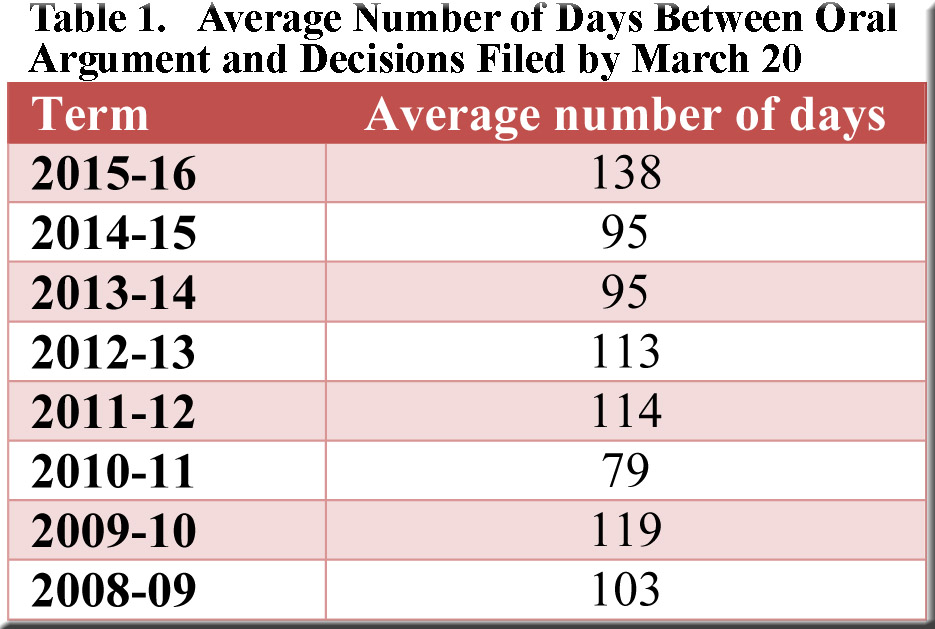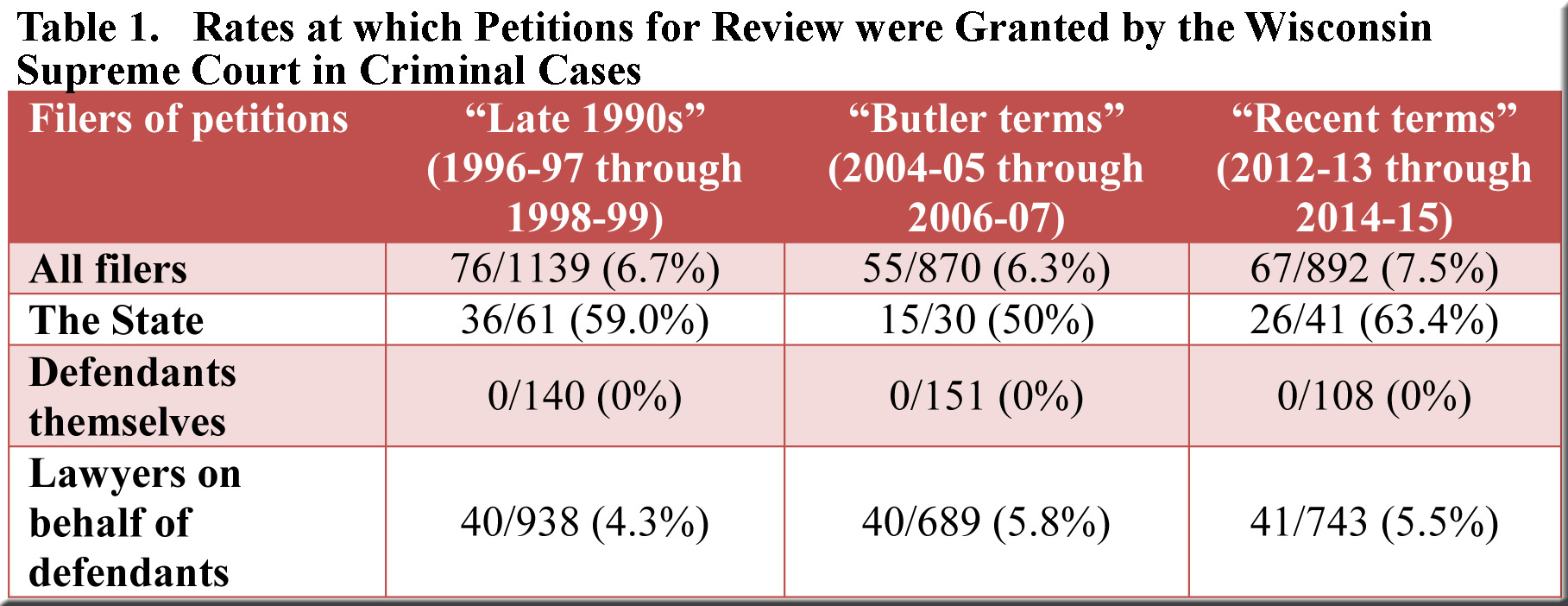These tables are derived from information contained in 87 Wisconsin Supreme Court decisions filed between September 1, 1992, and August 31, 1993. The total of 87 decisions does not include rulings arising from such undertakings as (1) disciplinary proceedings against lawyers and judges; (2) bar admission issues; (3) an instance in which the court vacated its own mandate; and (4) various motions and petitions.
An additional case—a deadlocked (3-3) per curiam decision (Wisconsin Public Service Corporation v. Public Service Commission)—figures only in the “Number of Oral Arguments Presented” table.
The tables are available as a complete set and by individual topic according to the subsets listed below.
Four-to-Three Decisions
Decisions Arranged by Vote Split
Frequency of Justices in the Majority
Distribution of Opinion Authorship
Frequency of Agreement Between Pairs of Justices
Average Time Between Oral Argument and Opinions Authored by Each Justice
Number of Oral Arguments Presented by Individual Firms and Agencies



